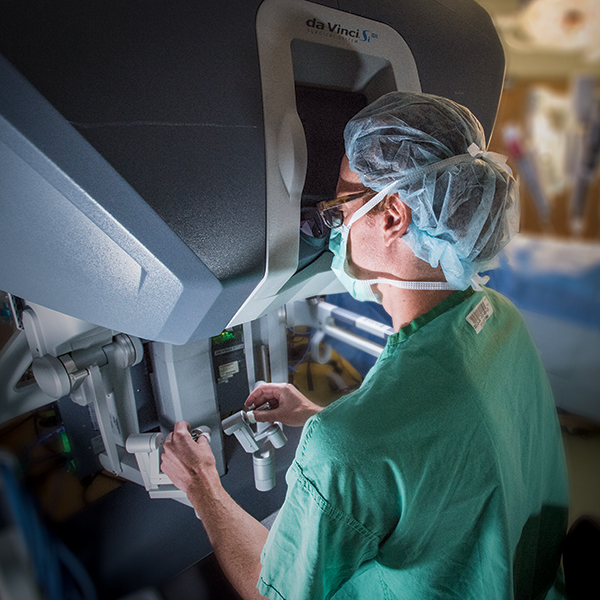The robots are coming to medtech: Where’s the value? (Medical Design & Outsourcing)

As each medtech manufacturer gears up to bring robots to surgery, they’ll need to create an outcomes-oriented value story in order to compete.
The biggest medtech headlines so far in 2019 tell a consistent story: The robots are coming.
From Medtronic’s $1.6 billion acquisition of Mazor in late December to Johnson & Johnson dropping $3.4 billion to acquire Auris Health in the first quarter, many major players are making significant investments in robotics. T
The robot-assisted surgery market is estimated to reach $5.6 billion by 2025, according to Grand View Research. The market is poised for explosive growth, and for good reason: Robotic innovations are dramatically reshaping the practice of surgery, with the potential to be leveraged from diagnosis to incision.
Robotics in medtech: Evolution or revolution?
The growth in robotics could start to fill operating theaters with ever more highly specialized capital equipment. With one-third of hospitals in the U.S. already running at least one robot, will the gap continue to widen between hospitals that specialize in robotic procedures and other institutions without any robotics capabilities? Or in an alternative future scenario, might the early adopters of robotics be unable to stay at the forefront of procedure innovation simply because of a lack of space in their facilities for more robots? For manufacturers lining up to commercialize their technologies, these scenarios mean that they must choose whether to focus on a small set of robotics-oriented specialists or try to maximize the breadth of penetration of the technologies via a land-grab strategy. First movers certainly could gain an advantage if they embed their technologies before their peers in either scenario.
As the buzz around robotics continues to build, we could see a robotic arms race as the major players rush to develop and commercialize their technologies. Although the power and potential of these technologies is transformational, robotics offerings are also helping some companies reap short-term rewards and stay relevant at the operating table. Stryker reported that its Mako knee replacement surgery robot drove significant share gains for its devices in 2018. The Kalamazoo, Mich.–based orthopedic device giant has reported more than 76,900 knee and hip replacement procedures performed in 2018 and double-digit growth in installations expected in 2019.
As a closed system, the robot installation drives market share from competitors toward Stryker implants. It will be interesting to see how Zimmer Biomet leverages its Rosa knee surgery robot to regain that lost market share, or whether it pursues a different strategy on launch this year. If we see a strategy of placing a Rosa robot into a Mako account to regain share equilibrium, that’ll suggest that there is limited differentiation between the robots beyond being a short-term tool to drive device sales. On the other hand, if we see that Mako robots have closed the door to competitors, it will be much more of an uphill battle to regain market share.
Next-generation value proposition
As more players enter the robotics space, successful differentiation and sustained growth will not come from the features and benefits of a given robot alone. The full shift toward robotics will become imperative if health providers can realize benefits including reduced hours in operating rooms, lower readmission rates, better recovery times and less post-surgery trauma.
Marketers of robotic technologies can define clear value propositions to convince their customer base to buy into their robotics offerings. Here are some strategies:
- Aligning robotics offerings to mission-critical customer needs: Robot-assisted techniques are driving improved outcomes for complex procedures. Real-world evidence shows a 50% reduction in surgical blood loss and a 70% reduction in length of stay through robotic-assisted techniques, which means that robots could be mission-critical for hospitals that are still conducting less efficient traditional surgical procedures and getting poorer outcomes.
- Making the robotically assisted system relevant to all key stakeholders: While evidence for clinical benefits is crucial for surgeons, administrative stakeholders are more concerned with the economics, and many remain skeptical. Whereas Stryker initially drove adoption via a key opinion leaders (KOL) strategy, we expect to see new market entrants, as well as incumbents, widening their message to demonstrate a broad appeal to multiple stakeholders.
- Translating better outcomes to higher financial impact: Robotics investments are significant, so the costs need to be clearly justified. For instance, Stryker emphasizes that its Mako system reduces 66% of the readmission costs. By quantifying the economic benefit of their robots, manufacturers can help potential buyers swallow the $1-million-plus price tags. For those who cannot, alternative payment options such as rentals and leases will be more common.
- Supporting outcomes expectations with measurable data: The outcomes that surgical robots promise must be measurable. How and why is robotically assisted surgery better than open surgeries? At what rate are the surgical complications decreasing? For example, data shows that Medtronic’s Mazor Core System leads to reductions in the rate of surgical complications and revision surgeries compared to traditional minimally invasive spine surgery. We expect manufacturers to leverage such data generated by existing robot users to reinforce the value of robotics and demonstrate impact to other prospective customers.
- Ensuring that outcomes are achievable: Training is essential to deliver the outcomes that are promised by robotics, but with hospitals spending thousands of dollars to train each physician to use a robot, this could be a potential barrier. If manufacturers help customers seamlessly implement robotics technologies, their customers will see a quicker return on their investments. We will likely see many companies providing high levels of support to new users, with representative present every time surgeons used, but this support should be strategically deployed to ensure rep presence is creating value for the end users and institutional outcomes.
As each manufacturer gears up for its own “year of the robot,” it’s time for them to put these foundational principles in place to shape an outcomes-oriented value story to capitalize on the market opportunities ahead.
Will Randall is a manager with ZS in the medical products and services team, focusing exclusively on medtech clients. Will began his ZS career in the London office in 2009. He graduated with a First Class degree from Trinity College, Oxford University.
